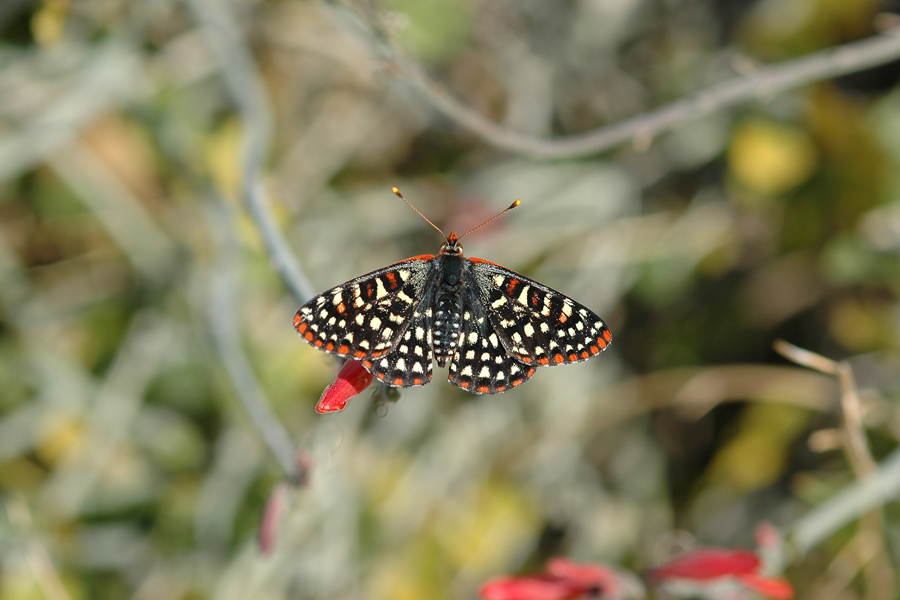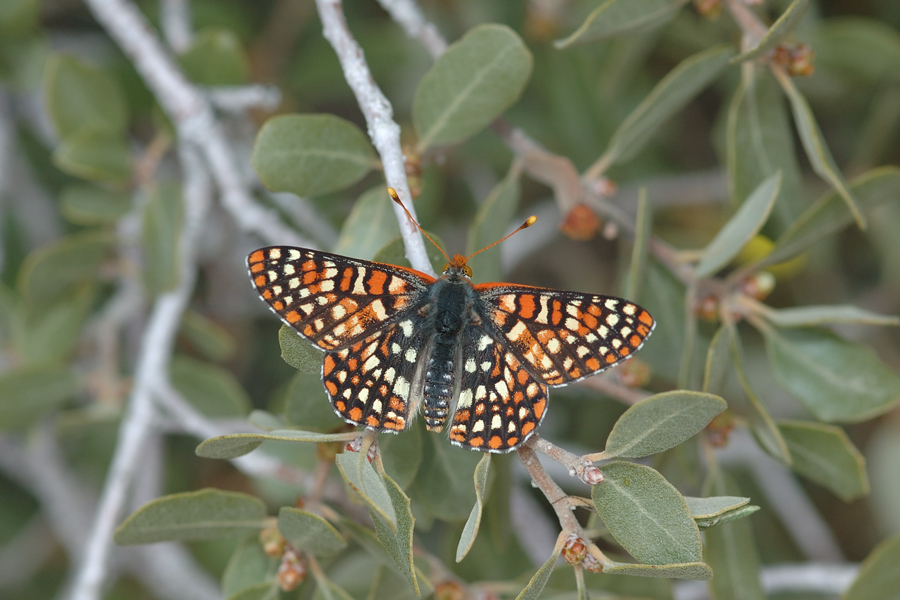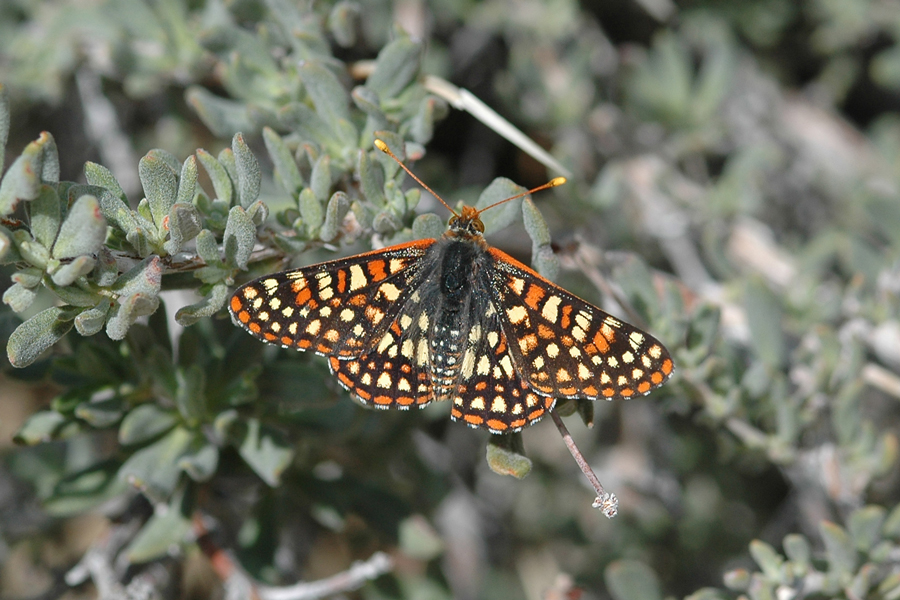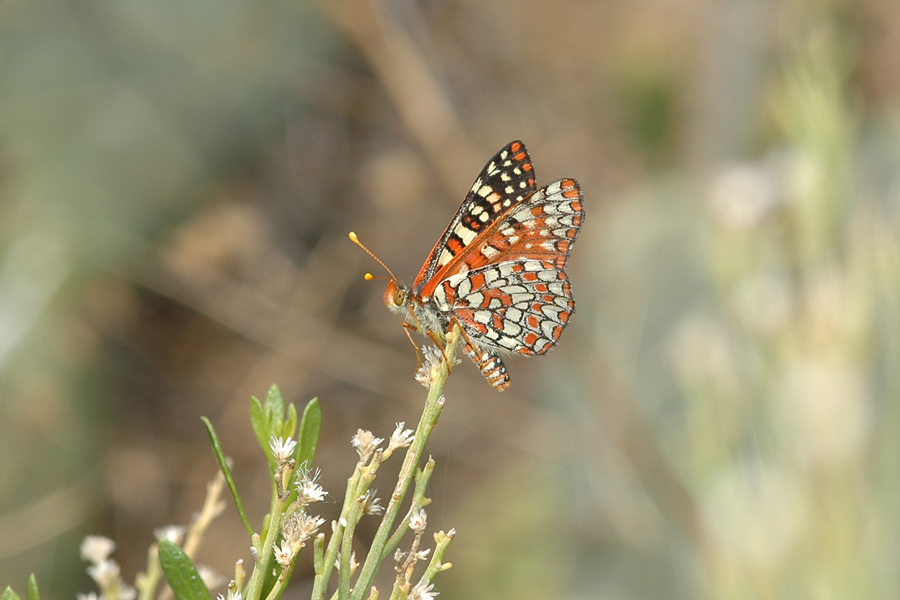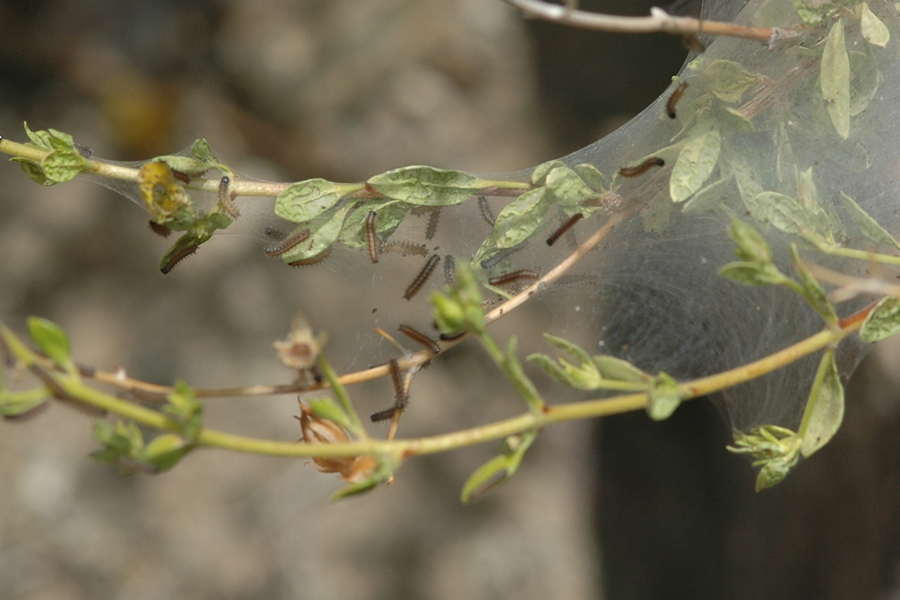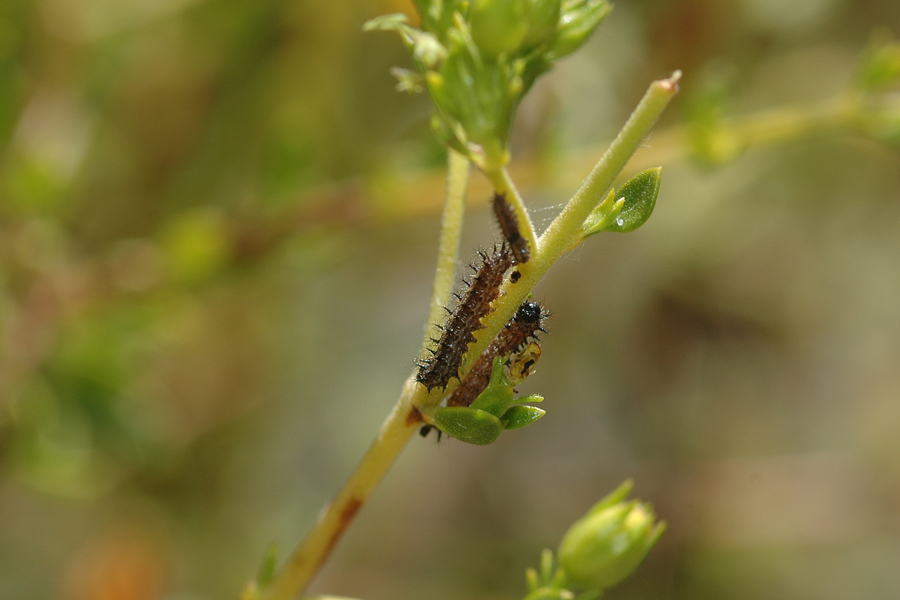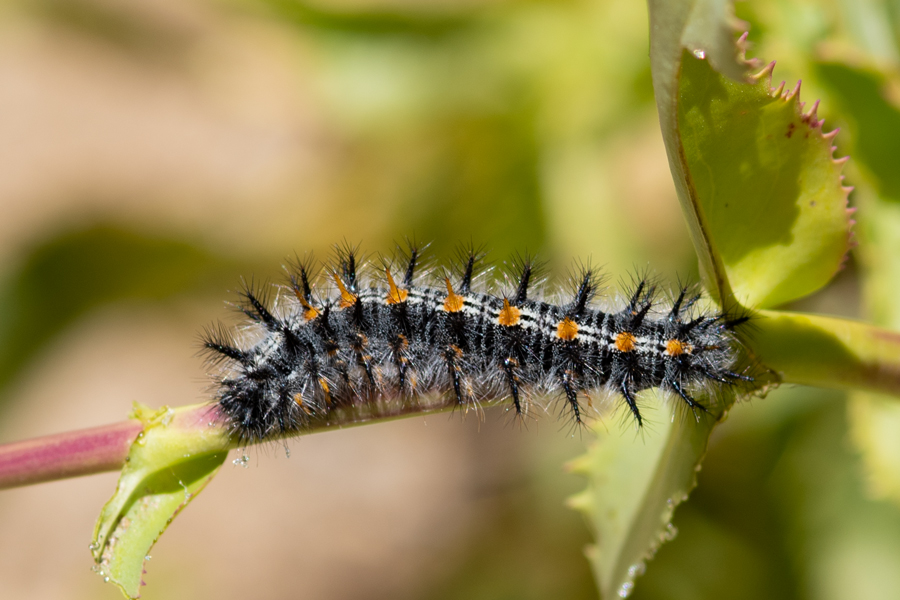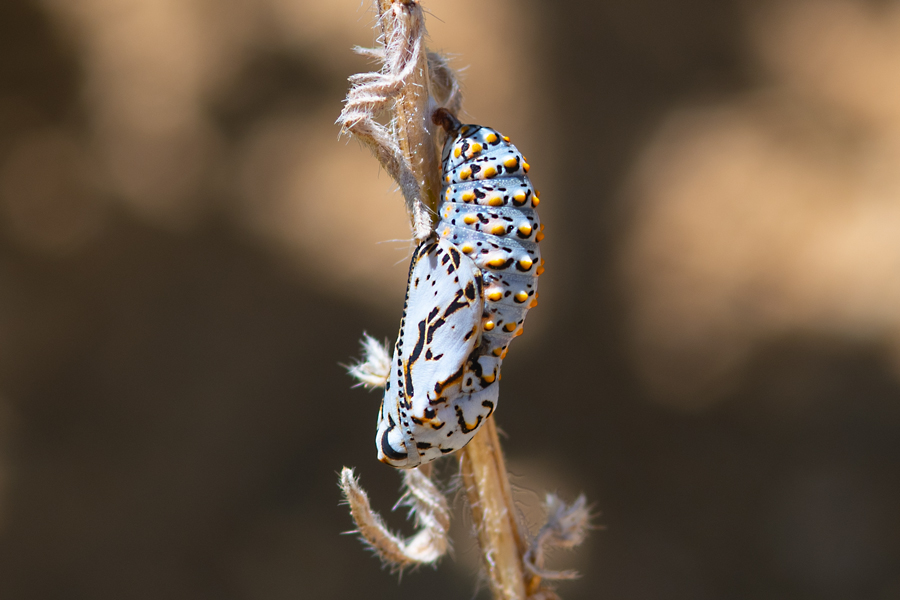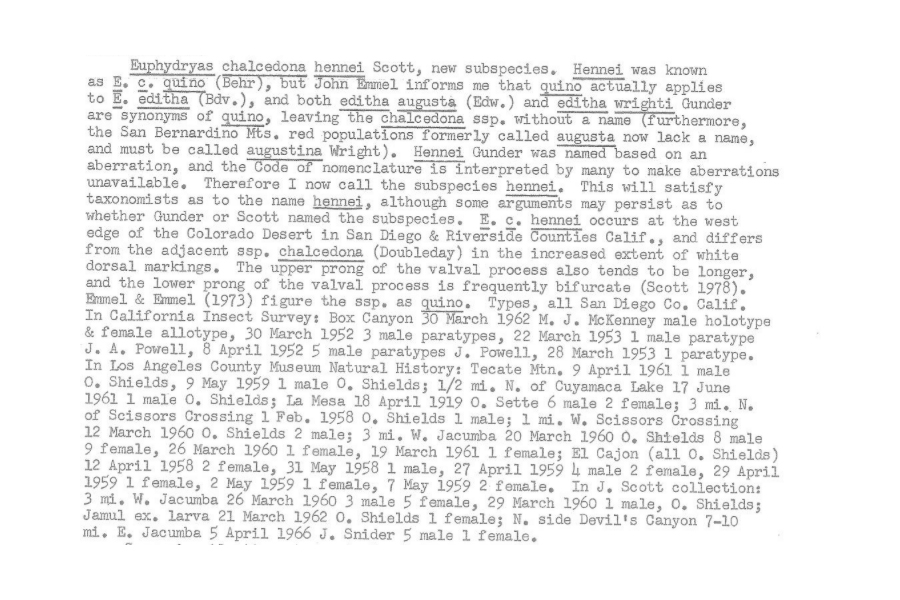Euphydryas chalcedona hennei
Henne's Chalcedon (or Variable) Checkerspot
Euphydryas chalcedona hennei is a butterfly of the Colorado desert in San Diego and Riverside counties. The preferred host is the yellow-flowered Keckiella antirrhinoides var. microphylla (Scrophulariaceae). Generally this is a late spring, early summer flyer that can explode in numbers or (reportedly) not fly for years at a time during drought conditions. They may produce a second brood in the fall, and in autumn visits to Cactus Spring Trail from 2013 to 2016, I photographed at least one hennei each of the four years. Booms and busts aside, the norm is for larvae to feed in nests until about the third instar, then go into diapause until the plants recover in the spring. The transition from a ravenous post-diapausal larva to adult is rapid, perhaps only a few weeks.
James Scott named this subspecies in 1981 in Papilio (New Series) #1. The type locality is Box Canyon in San Diego County. The San Diego desert hennei are relatively dark in aspect, with a black ground color and cream/white and red markings on the dorsal side. As one gets up out of Anza-Borrego into the Cactus Springs Trail area, the phenotype lightens into what may be a blend zone with the lighter chalcedona corralensis populations in the deserts to the north. Gordon Pratt says these are "near corralensis" (pers. comm.). The nominate subspecies in, e.g., the San Gabriels is relatively darker in aspect than even hennei.
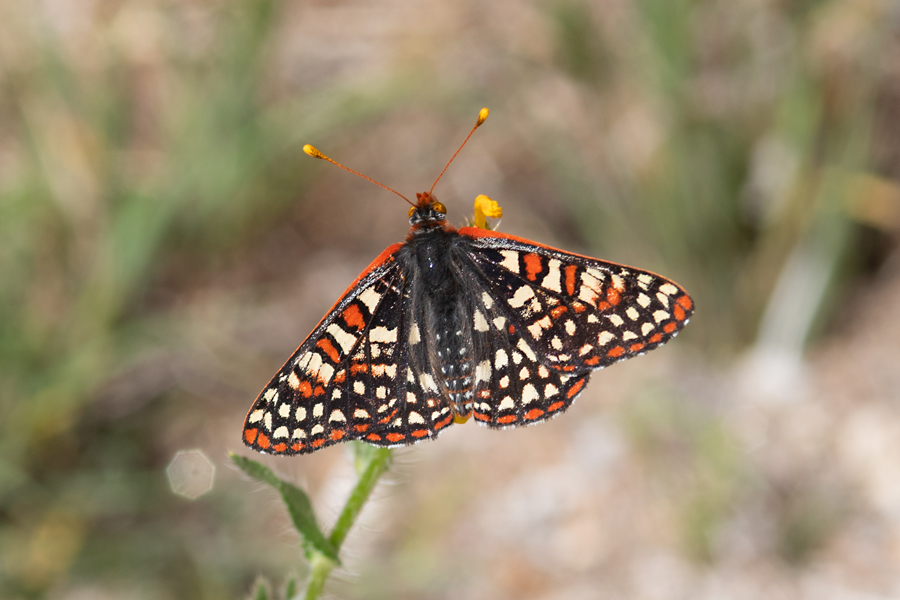
Euphydryas chalcedona hennei from the type locality, Box Canyon in Anza-Borrego Desert State Park. The nearly black ground color with the red and cream "checks" really sets them apart from the mojave desert subspecies corralensis and kingstonensis. Compare the red markings here with the paler orange checks on kingstonensis.
Euphydryas chalcedona hennei. Hellhole Canyon in Anza-Borrego Desert State Park, January 30, 2006. This sighting was an early record for California.
A very reddish Euphydryas chalcedona hennei on Cactus Springs Trail, Santa Rosa Wilderness, March 31, 2011. The chalcedona there is variable, and can resemble both the typical hennei and corralensis (as does this one) phenotypes. Geographically, the Cactus Spring Trail population I'm pretty familiar with is not terribly far (less than 20 air miles) from the Anza-Borrego populations.
Euphydryas chalcedona hennei, also on Cactus Springs Trail, March 23, 2010. These can be extremely common along this trail in the spring.
A ventral of 'Henne's' variable checkerspot on Cactus Springs Trail, Santa Rosa Wilderness, May 14, 2006. Chris Henne was one of our great southern California lepidopterists; several butterflies have been named after him.
Larval nest with lots of Henne's variable checkerspot caterpillars on desert bushpenstemon. Cactus Spring Trail, Santa Rosa Wilderness, May 30, 2010.
A closer view of larvae, these a little further along. This checkerspot can be abundant on this trail in the spring, and I had often wondered what the host plant or plants were at this location; on this hike I found out, as larval nests were easily found.
Last instar larva of Euphydryas chalcedona hennei on Penstemon spectabilis at Keen Camp Summit. April 28, 2021.
The chrysalis of chalcedona is very cool. I found this one April 28th, 2021 along the forest service road at Keen Camp Summit in the San Jacintos, not far from Idyllwild.
James Scott named ssp. hennei in his journal Papilio (New Series) 1:4 in 1981. There had been confusion with the name quino, which proved to apply to an editha subspecies, while Gunder (in a 1932 paper) had used the name hennei for an aberrant form of what was then considered Euphydryas chalcedona quino. So as I understand it, Scott was able to substitute the name hennei for quino because Gunder's formulation didn't conform to the rules. The name hennei was "unavailable" ("[A] scientific name that does not conform to Articles 10 to 20, or that is an excluded name under Article 1.3."), so he could use it for the desert chalcedona subspecies formerly known as quino.
©Dennis Walker

